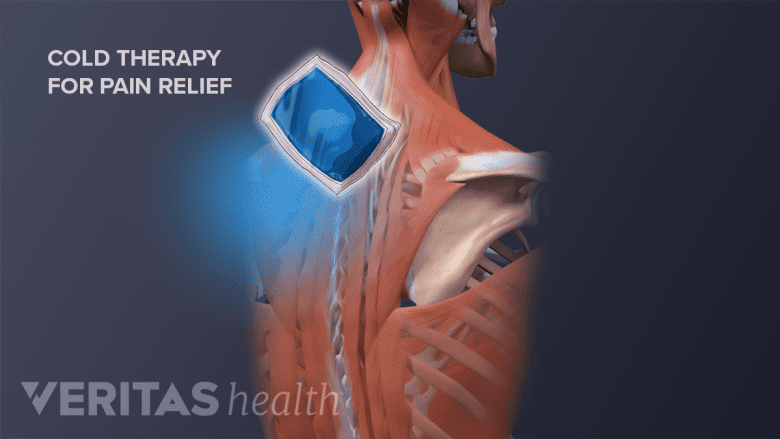Because the pain usually goes away quickly, athletes may not think they need to report a stinger to a coach or get medical attention. Seeing a trainer or doctor as soon as possible is often advised, however.
Research has shown that once an individual has sustained a stinger, he or she is at greater risk of having another.1Kawasaki T, Ota C, Yoneda T, Maki N, Shingo U, Nagao M, Nagayama M, Kaketa T, Takazawa Y, Kaneko K. Incidence of Stingers in Young Rugby Players. American Journal of Sports Medicine. 2015(11)43:2809-15. These repeat injuries may even occur in different arms. In rare cases, repeated stingers have been linked to permanent nerve damage, including weakness or numbness.
Moreover, it is not uncommon for the player to sustain other injuries in addition to the stinger, such as a concussion or possible nerve or spinal cord injury, so taking precautions to protect the neck and spine and seeking medical care is advisable.

Treating the shoulder area with ice packs reduces inflammation and provides an instant numbing effect.
In This Article:
Rest Is Best
Recovery from a stinger varies widely. Some players are able to return to their sport in less than an hour, while others might be out for a couple of weeks. Rest is one of the best medicines if symptoms persist. The athlete should be symptom-free before returning to competition.
See The P.R.I.C.E. Protocol Principles
Ice and Anti-inflammatories
If pain accompanies the neurological symptoms, first-line treatments may include ice application and nonsteroidal anti-inflammatory medication (NSAIDs).
- Ice application. For treatment of localized pain, ice or a cold pack may be applied. Cold application will reduce local inflammation, which is usually contributing to the pain. Ice should never be applied directly to the skin or for longer than 15 or 20 minutes at a time.
- NSAIDs. An anti-inflammatory medication, such as ibuprofen, may also be taken to reduce the inflammation and help alleviate pain.
If muscle spasm follows the injury, a muscle relaxant may be prescribed.
While recovering, pain relief medicine and ice packs can make life more comfortable. For severe symptoms, a short course of oral steroids may be recommended. Short-term use of a supportive neck collar may also be helpful. If recovery is slow, targeted exercises are useful for keeping the area flexible as the body heals.
If the pain continues, treatment recommendations may include a cortisone (steroid) injection in the area near the affected nerve. Physical therapy or working with a trainer is another good option in some cases.
Stingers do not require surgery. However, if another injury was sustained in addition to the stinger, surgery may be an option.
Getting Back In the Game
Athletes are usually cleared to return to the sport once these conditions have been met:
- The pain has gone
- Muscle strength and range of motion have returned to the level before the injury
- There is no remaining numbness or tingling
Keeping muscles strong and flexible, using safer form to minimize the impact on the head, and wearing extra protective gear such as neck supports built into shoulder pads can help athletes reduce their risk of stingers.
- 1 Kawasaki T, Ota C, Yoneda T, Maki N, Shingo U, Nagao M, Nagayama M, Kaketa T, Takazawa Y, Kaneko K. Incidence of Stingers in Young Rugby Players. American Journal of Sports Medicine. 2015(11)43:2809-15.

